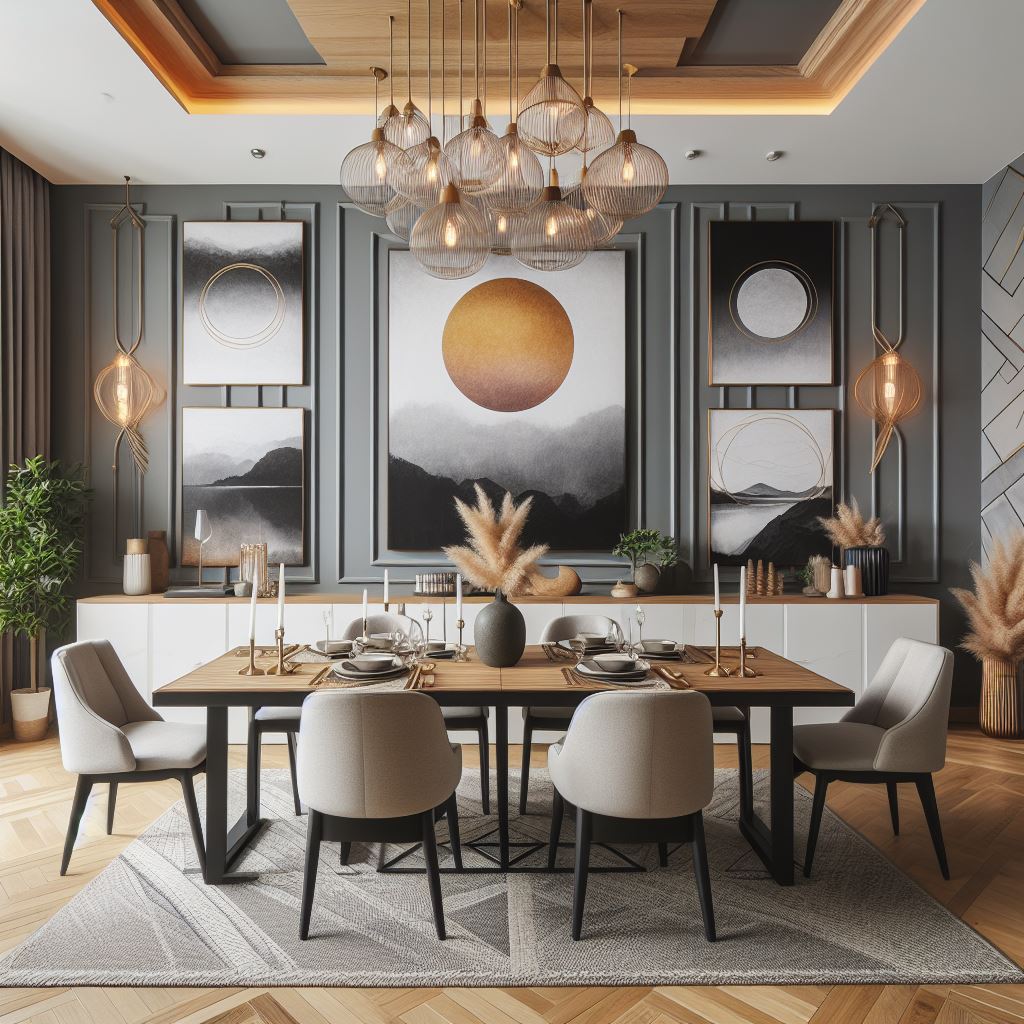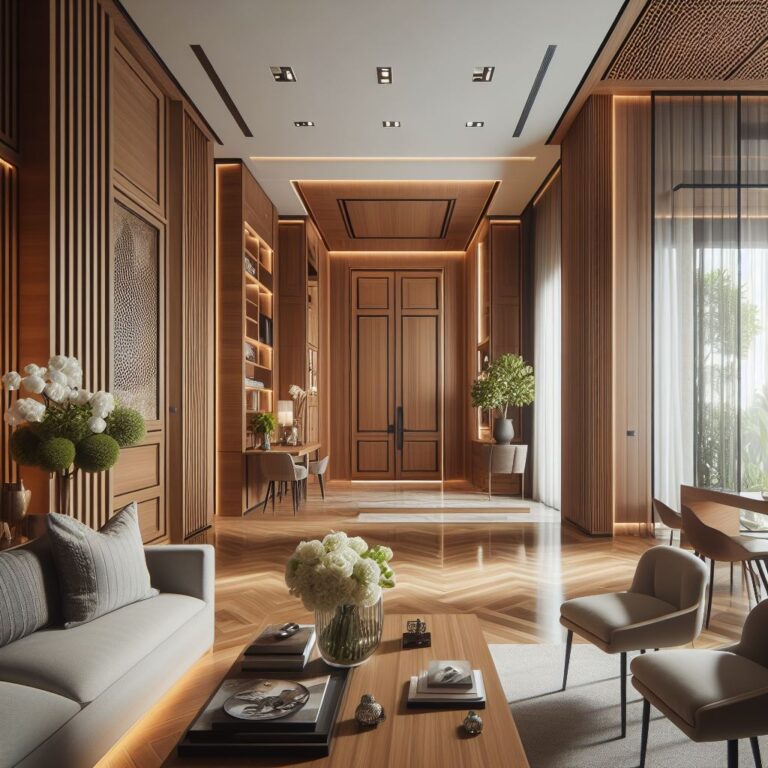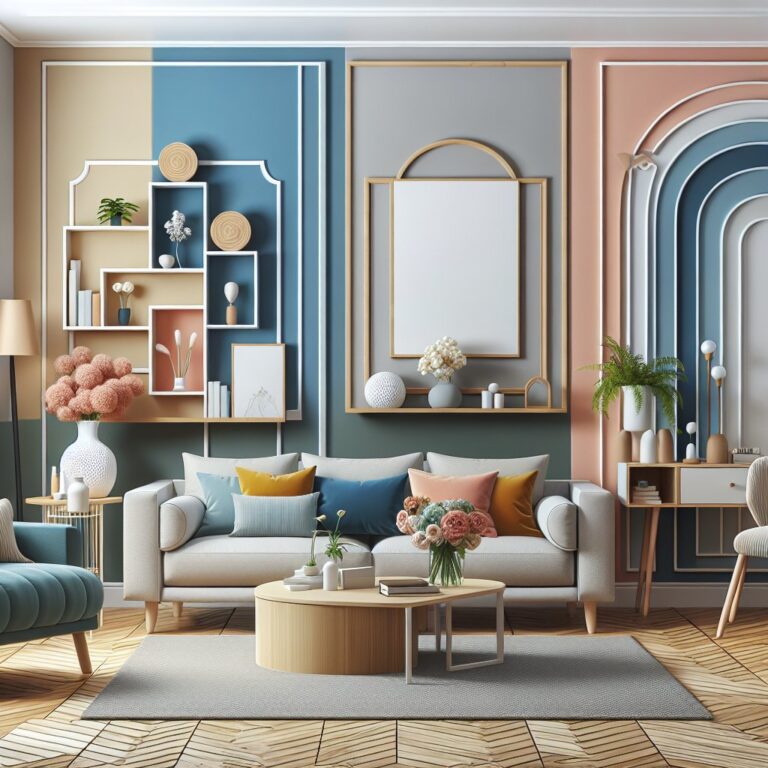10 Affordable Wall Paint Ideas for Instant Interior Charm
Your home’s interior says a lot about you – it speaks of your style, personality, and taste. Oftentimes, we overlook the simple yet powerful touch that wall paint can lend to the ambiance of our living spaces. With the ability to alter perceptions of space and inspire mood shifts, wall paint is undeniably the unsung hero of interior design.
This post is for all homeowners and DIY enthusiasts who want to revamp their homes without breaking the bank, showcasing ten wall paint ideas that can breathe new life into any room. From subtle changes to bold statements, each of these ideas is geared to provide a distinctive look to different areas and cater to a variety of tastes.
The Basics of Choosing the Right Wall Paint
Before picking up your paintbrush, it’s crucial to understand the basics. We start with the role of color psychology and how to ensure the colors you choose to resonate with the desired room ambience. Then, we’ll match your paint with your existing decor to create a harmonious space.
Understanding Color Psychology
Color plays a profound role in our lives, influencing our emotions and behaviors. When selecting a wall color, it’s important to consider the mood you’d like to evoke in the room. For example, blue is often associated with tranquility, making it a great choice for bedrooms, while vibrant yellows can bring energy to kitchens and living areas.
Coordinating with Your Decor
Ensuring your wall color complements your furniture and decor is key to a successful paint job. Neutral shades such as gray and beige are versatile and can match with most styles, but don’t underestimate the impact of a well-thought-out color scheme—a cohesive palette can elevate the look of your entire room.

10 Simple Wall Paint Ideas
Here are 10 wall paint ideas that anyone can execute, each with their own unique charm and suitability for various room types.
The Timeless Elegance of Monochrome Molding
Monochrome molding combines the classic charm of white or off-white walls with bold black (or any other color of your choice) for the molding, creating a stark contrast that adds architectural interest to any room. Ideal for living rooms or home offices, this technique is both timeless and modern.
Ombre Walls for a Soft Ethereal Look
Ombre walls transition from one color to another, creating a gradient effect that can give the illusion of a taller ceiling or a larger room. Perfect for bedrooms and nurseries, this technique is best achieved with two or more shades of the same color family.
Geometric Accent Walls for a Contemporary Edge
Geometrics can bring a striking and contemporary angle to otherwise plain rooms. With painter’s tape and a steady hand, you can have a wall that’s anything but ordinary. Ideal for modern living rooms, home theaters, or even bathrooms.
Stripes to Add Visual Interest and Space to Small Areas
Vertical stripes have the magical ability to draw the eye upward and create an impression of higher ceilings, making it great for rooms with low ceilings. Alternatively, horizontal stripes can make a narrow space appear wider. Use contrasting shades for a dramatic effect, or tone-on-tone for a subtle enhancement.
Murals for a Touch of Artistry
Murals elevate wall painting to an artistic level. Whether it’s a scene, a pattern, or an abstract expression, a mural can turn any room into a visual delight. Best suited for feature walls, murals can be the focus of the room or a subtle backdrop, depending on the design.
The Serenity of Sky-Blue Ceilings
If you’re tired of staring at plain old white ceilings, consider painting them sky-blue for a sense of the outdoors within your home. This is particularly effective in rooms where the ceiling is a significant portion of the visible space, like bedrooms and bathrooms.
Color Blocking to Anchor Different Functional Zones
Color blocking organizes spaces and highlights architectural features. By painting the lower half of a wall with a darker hue, you can visually ground furniture groups in larger spaces. This is excellent for open-concept homes or to create distinct zones in multipurpose rooms.
Chalkboard and Whiteboard Paints for Interactive Walls
Not just for children’s rooms, chalkboard and whiteboard paints can be a functional and fun addition to any area. From grocery lists and meal plans in the kitchen to doodles and memos in the home office, these paints provide endless opportunities for creativity and organization.
Metallic Finishes for a Luxe Touch
Metallic finishes can bring a touch of luxury to your walls. Gold, silver, or bronze can highlight architectural details or create a stunning feature wall. These finishes work well in dimly lit spaces, reflecting light and adding warmth to the room.
Colorful Cabinets for a Pop in Kitchens and Baths
In the kitchen or the bathroom, painting the inside of your cabinets can be a delightful surprise. Choose a complementary color to the walls, or go bold with a contrasting shade. This not only adds a fun element to your design but also protects your cabinets from wear and tear.

Budget-Friendly Tips for DIY Wall Painting
Perhaps one of the biggest turn-offs for taking on a painting project is the cost. However, with some savvy savings and DIY tips, you can significantly cut expenses without compromising on the result.
Cutting Costs on Paint and Materials
Buy paint in bulk, look for “Oops” paint which usually consists of custom colors that went unused, or ask for mistints at your local hardware store. Additionally, using quality brushes and rollers can save you paint and time, as they ensure an even application with no need for excessive coats.
Wall Preparation and Execution
Proper wall preparation is the secret to a professional-looking finish. Fill in holes, sand smooth, and use a primer to provide a smooth base for your paint. When executing the painting, take your time, use a quality drop cloth, and peel the painter’s tape off at an angle when your paint is completely dry to avoid peeling.
Maintenance and Care for Your Newly Painted Walls
Once your walls are painted, it’s important to take care of them properly to maintain their appearance for years to come.
Cleaning Painted Walls and Preventing Stains
To clean your painted walls, start with a gentle vacuum or dusting to remove surface dirt. For tougher stains, use a mild detergent and a soft sponge, and always test a small, inconspicuous area first. For high-traffic areas, consider an easy-to-clean, washable paint.
When to Repaint for a Fresh Look
The lifespan of paint can vary based on the quality of the paint, the use of the room, and the environment. As a general rule of thumb, most paint jobs should last about 5-7 years before signs of wear and tear begin to show. Keep an eye out for fading, scuffs that cannot be cleaned, or peeling, which are all indicators that it’s time for a refresh.
In Conclusion
Wall paint has an incredible potential to transform your home’s interior and enhance your living experience. With these simple and budget-friendly ideas, you can achieve a personalized space that invigorates or soothes, depending on your design goals. Remember, the process of painting is as much about creativity and self-expression as it is about technique, so don’t be afraid to experiment.
The best part about these ideas is that they are just a starting point. The world of wall paint is a canvas of limitless possibilities, and it’s all yours to explore. Engage with our community and share your own experiences of wall paint transformations in the comments below. And if you’re ready to start your next painting project, take the plunge and soak in the refreshing change that a new coat of paint can bring to your home.
FAQs
What paint looks best on walls?
Choosing the right paint for your walls is as crucial as selecting the perfect roof, as it significantly contributes to the overall aesthetic and mood of your home. Satin and eggshell finishes are highly popular due to their subtle sheen and ease of cleaning, making them ideal for living rooms and bedrooms. For areas prone to moisture, such as kitchens and bathrooms, semi-gloss or high-gloss finishes offer excellent durability and resistance to mold and mildew. Color-wise, neutral tones like beige, gray, and off-white exude a timeless elegance, while bold colors can create accent walls or thematic spaces. Ultimately, the best paint for your walls depends on your personal taste, the room’s function, and the amount of wear and tear it will endure.
How do I choose paint?
When choosing paint, it’s important to consider several factors beyond just color and finish. Start by assessing the paint’s quality, as higher-grade paints provide better coverage and a more durable finish, reducing the need for frequent touch-ups. Pay attention to the room’s lighting, as this can significantly affect how the paint color appears at different times of the day. Sampling paint on a small section of your wall and observing it under various lighting conditions can help ensure you make a choice you’ll be satisfied with long-term. Additionally, consider the paint’s ingredients and opt for low-VOC or VOC-free options to ensure better indoor air quality for your home. Lastly, think about the long-term appeal of the color you choose; while trendy colors can be appealing, classic hues may be more enduring and appealing over time.



